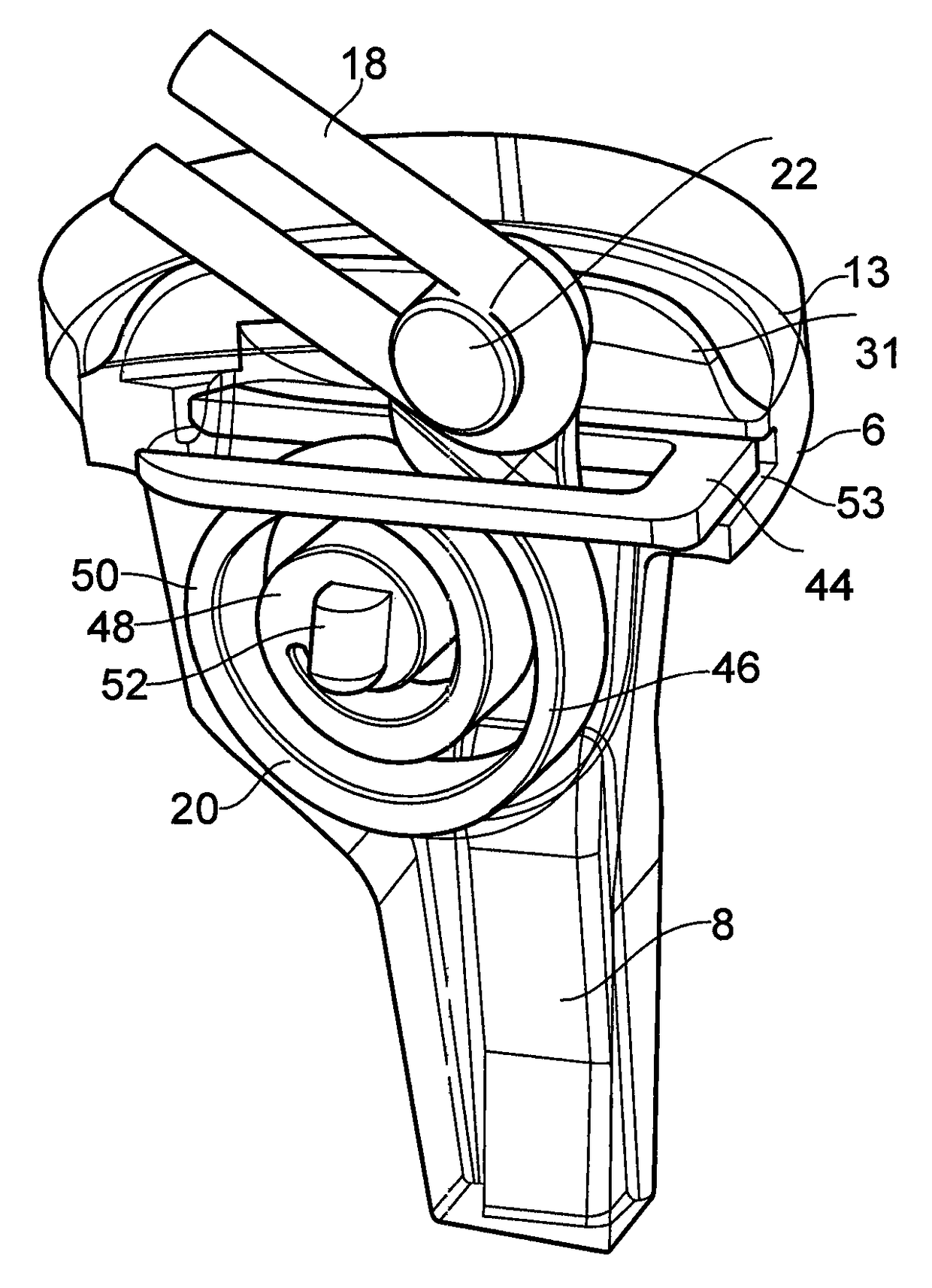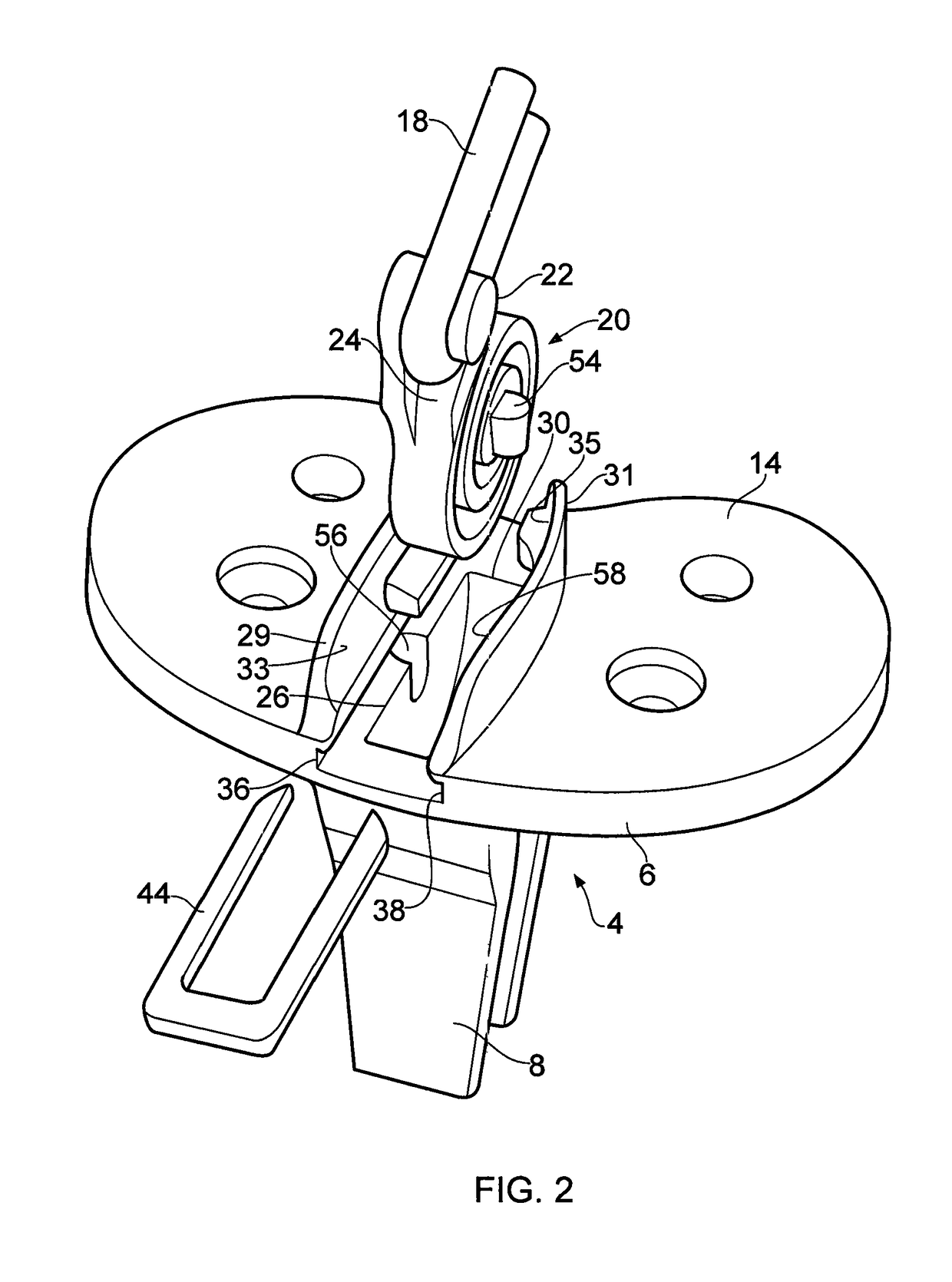Ligament assembly
a technology of ligaments and joints, applied in the field of ligaments, can solve the problems of difficult to match the properties of artificial fibres, proved extremely difficult, and difficult to replicate the natural kinematics of joints without the presence of naturally functioning ligaments
- Summary
- Abstract
- Description
- Claims
- Application Information
AI Technical Summary
Benefits of technology
Problems solved by technology
Method used
Image
Examples
Embodiment Construction
[0050]In this specification, the terms anterior, posterior, lateral and medial are used in relation to a ligament assembly implanted in a patient.
[0051]Referring to FIGS. 1 and 2, a knee prosthesis incorporating a ligament assembly 2 comprises a tibial component 4 having a tibial tray 6 integrally formed with a stem 8, a femoral component 10 and a pair of bearing components 12, 13. The bearing components 12, 13 separate the tibial component 4 and femoral component 10, and are formed with proximal and distal bearing surfaces which engage corresponding bearing surfaces 14, 15, 16 on the tibial tray 6 and on the femoral component 10. These various bearing surfaces enable the tibial component 4 to rotate and translate relative to the femoral component 10. One or both of the bearing components 12, 13 may be meniscal bearing components, rotational platform bearing components, or fixed bearing components.
[0052]An artificial ligament 18 is connected at one end to the femoral component 10, a...
PUM
 Login to View More
Login to View More Abstract
Description
Claims
Application Information
 Login to View More
Login to View More - R&D
- Intellectual Property
- Life Sciences
- Materials
- Tech Scout
- Unparalleled Data Quality
- Higher Quality Content
- 60% Fewer Hallucinations
Browse by: Latest US Patents, China's latest patents, Technical Efficacy Thesaurus, Application Domain, Technology Topic, Popular Technical Reports.
© 2025 PatSnap. All rights reserved.Legal|Privacy policy|Modern Slavery Act Transparency Statement|Sitemap|About US| Contact US: help@patsnap.com



